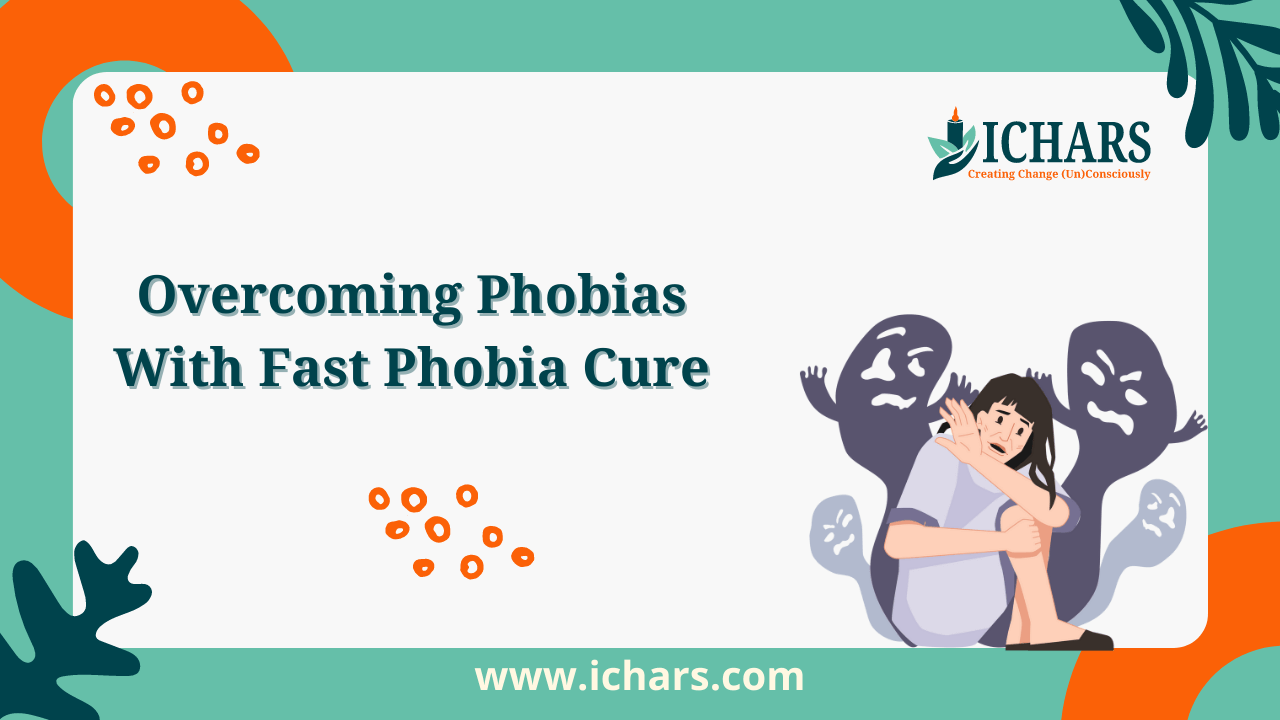As a psychologist, you may feel frustrated when traditional methods fall short in treating clients with debilitating phobias. Despite your expertise, these persistent fears can undermine your effectiveness and leave clients still struggling.
The Fast Phobia Cure offers a powerful NLP technique that quickly reprograms the subconscious mind to alleviate phobias. By mastering this technique and integrating it with other methods, you can enhance your practical skills and deliver transformative results for your clients.
What is a Phobia?

A phobia is an intense, irrational fear of a specific object, situation, or activity that poses little or no actual danger. This fear is persistent and disproportionate to the actual threat, leading to significant distress and interference with daily life.
Phobias are categorized as a type of anxiety disorder and can range from mild to severe, affecting an individual’s ability to function normally.
Key Characteristics of Phobias:
- Intense Fear:
- The fear experienced is extreme and often out of proportion to the actual threat posed by the phobic stimulus. For instance, someone with a fear of flying may experience overwhelming anxiety despite the relative safety of air travel.
- Avoidance Behavior:
- Individuals with phobias go to great lengths to avoid encountering the feared object or situation. This avoidance can significantly limit their activities and social interactions.
- Physical and Emotional Symptoms:
- Exposure to the phobic stimulus can trigger a range of symptoms, including rapid heartbeat, sweating, trembling, dizziness, and feelings of panic. Emotional responses may include feelings of dread, horror, or intense anxiety.
- Impact on Daily Life:
- Phobias can interfere with an individual’s personal, social, and professional life. For example, a person with a fear of public speaking might avoid job opportunities that require presentations, affecting their career advancement.
- Recognition of Irrationality:
- Individuals often recognize that their fear is irrational, but this awareness does not alleviate their anxiety. This insight can be frustrating and add to their sense of helplessness.
Common Types of Phobias:
- Specific Phobias: Fear of specific objects or situations, such as heights (acrophobia), spiders (arachnophobia), or flying (aviophobia).
- Social Phobia (Social Anxiety Disorder): Intense fear of social situations where one might be judged or scrutinized by others.
- Agoraphobia: Fear of situations where escape might be difficult or help might not be available in the event of a panic attack, often leading to avoidance of public places.
Understanding Phobias: Layers of Psychological Causes
Phobias go beyond simple fears, manifesting as intense, irrational fears of specific objects or situations. The roots of phobias are often complex and multilayered, including:
- Traumatic Experiences: Past traumatic events can trigger phobias. For example, a child bitten by a dog might develop a lifelong fear of dogs.
- Learned Behaviors: Observing others’ fearful reactions can instill similar fears. A child might develop a fear of spiders by seeing a parent react fearfully.
- Genetic Predisposition: Some individuals have a genetic predisposition to anxiety and phobias.
- Subconscious Associations: Phobias can develop from subconscious associations between a neutral stimulus and a frightening event.
- Cognitive Distortions: Irrational beliefs and negative thought patterns can exacerbate phobias, making the fear response more intense.
The NLP Fast Phobia Cure: Steps and Integration
The NLP Fast Phobia Cure is a powerful technique designed to quickly alleviate phobic responses by reprogramming the subconscious mind. Here’s how it works:
- Identifying the Phobia and Triggers: Begin by pinpointing the specific phobia and its triggers through self-reflection and therapy sessions.
- Dissociation Technique: The client visualizes themselves watching a movie of their past traumatic event from a dissociated perspective, reducing the emotional intensity of the memory.
- Rewinding the Memory: The client visualizes the event playing backward from end to start in a rapid, black-and-white format. This process is repeated several times to further detach emotional responses from the memory.
- Substitution of Positive Imagery: The client then visualizes a new, positive scenario involving the previously feared object or situation, reprogramming the subconscious with a more empowering response.
Case Study: Overcoming a Fear of Flying
Case Study: Jane, a 34-year-old professional, had a debilitating fear of flying, which hindered her career. Through the Fast Phobia Cure, Jane was guided to:
- Visualize herself watching a movie of a turbulent flight from a third-person perspective.
- Rewind the memory several times in black-and-white, diminishing its emotional impact.
- Replace the memory with a positive visualization of a smooth, enjoyable flight.
Results: By integrating the Fast Phobia Cure with relaxation techniques, Jane was able to board a plane confidently within a few therapy sessions. This method significantly reduced her fear and enabled her to fly without anxiety.
Enhancing the Fast Phobia Cure with Other Techniques
Integrating the Fast Phobia Cure with various therapeutic techniques can enhance its effectiveness:

- Cognitive Restructuring: Identify and challenge irrational beliefs associated with the phobia. Replace these with realistic thoughts, helping clients develop healthier thought patterns.
- Exposure Therapy: Gradually expose clients to the feared object or situation in a controlled environment, starting with less intimidating scenarios and progressively increasing exposure.
- Relaxation Techniques: Teach deep breathing, progressive muscle relaxation, and mindfulness to help clients manage anxiety during exposure therapy.
- Hypnotic Regression Therapy: Use hypnosis to uncover and reframe past traumatic experiences related to the phobia, allowing for deeper healing.
- Parts Integration: Resolve internal conflicts by integrating conflicting parts of the self, helping clients achieve harmony and reduce ambivalence.
Cognitive Hypnotic Psychotherapy: A Holistic Approach
Cognitive Hypnotic Psychotherapy (CHP) is an integrated approach that combines elements from various therapeutic models, such as Cognitive, Behavioral, Humanistic, and Psychodynamic therapies, with transformational techniques from Mindfulness, Neuro-Linguistic Programming (NLP), and Hypnotherapy. The Fast Phobia Cure is a prime example of how NLP techniques can be seamlessly integrated into a comprehensive therapeutic framework.
For psychologists looking to expand their toolkit and effectively address phobias and other persistent problems, consider exploring the Cognitive Hypnotic Psychotherapy® Program. This program equips you with advanced techniques, including the Fast Phobia Cure, to enhance your therapeutic practice and achieve transformative results for your clients.

